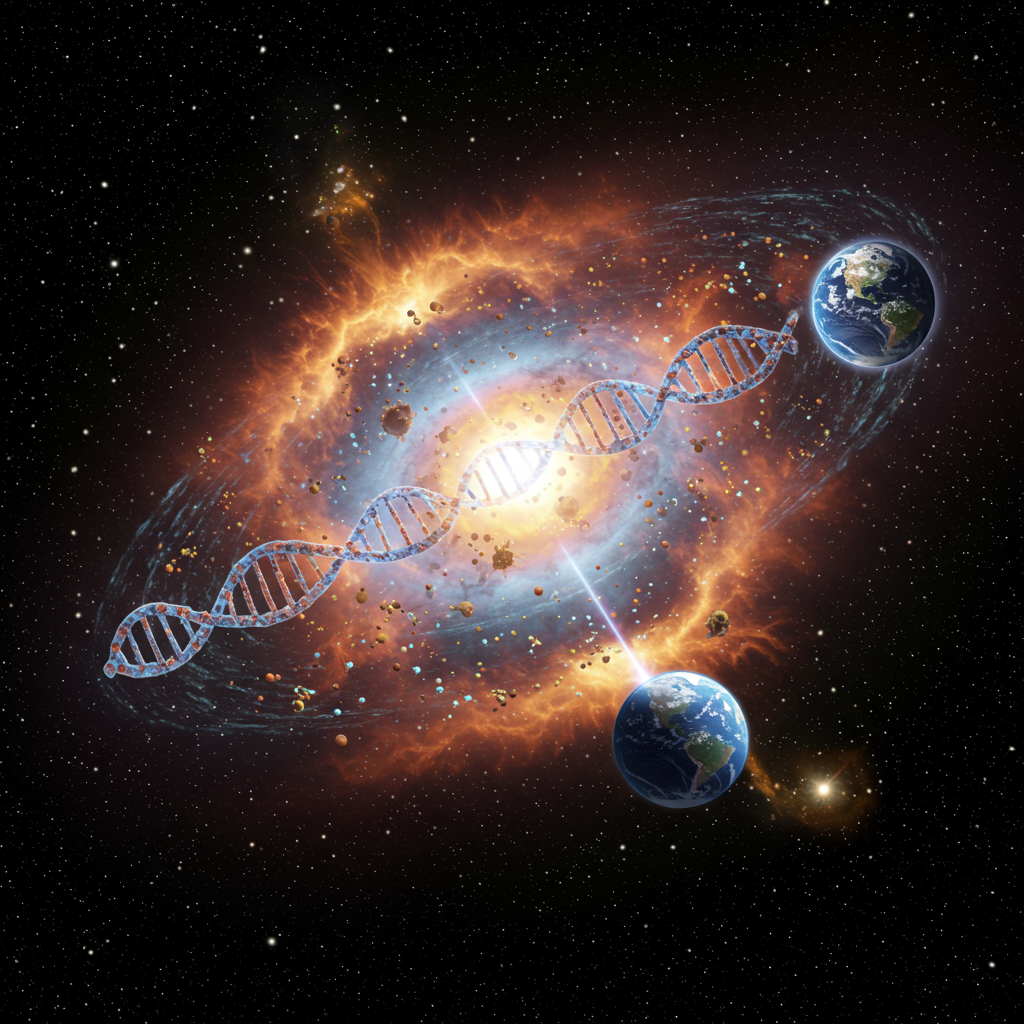Could the fundamental ingredients for life have hitched a ride to Earth billions of years ago? A recent astronomical discovery of alcohol around a distant young star is providing compelling new evidence for this long-standing theory, offering insights into how the building blocks of life, including ourselves, might have originated.
A Drunken Star System 330 Light-Years Away
Using the powerful Atacama Large Millimeter/submillimeter Array (ALMA) in Chile, researchers have detected methanol, a simple form of alcohol, and its rarer isotopic variations within the swirling gas and dust disk surrounding a young star known as HD 100453. Located about 330 light-years from Earth, this star system is essentially a nursery for future planets.
This marks the first time that these specific isotopes of methanol have been found in the disk of a young star similar to HD 100453, though methanol itself has been spotted in other star-forming regions before. The methanol was specifically found concentrated at the inner edge of a significant dust ring, roughly 1.5 billion miles from the central star.
Why Alcohol Matters in Space
Methanol isn’t just for celebratory toasts; in the cosmos, it’s a crucial building block for complex organic compounds, including essential components like amino acids, which are fundamental to life as we know it.
Finding the isotopic forms of methanol provides scientists with “essential insight into the history of ingredients necessary to build life here on Earth,” explained study lead author Alice Booth, a research fellow at the Harvard and Smithsonian Center for Astrophysics.
The Star’s Influence on Chemical Detection
The star HD 100453 plays a role in this discovery. Being about 1.6 times more massive than our Sun, it has a warmer protoplanetary disk. This higher temperature means that molecules like methanol exist as gas relatively far out from the star. Around smaller, cooler stars, these molecules are typically frozen into ice, making them much harder for instruments like ALMA to detect in the gaseous phase.
The Comet Connection: Delivering Life’s Ingredients?
One of the most significant findings from this study is the striking similarity between the ratio of methanol to other organic molecules found in the HD 100453 disk and the ratios observed in comets right here in our own solar system.
This parallel strongly supports the hypothesis that ices within these protoplanetary disks aggregate over time to form comets. These cosmic travelers become loaded with a diverse cargo of complex organic molecules. The theory suggests that these organic-rich comets could then be delivered to nascent planets through collisions.
“This research supports the idea that comets may have played a big role in delivering important organic material to the Earth billions of years ago,” said study co-author Milou Temmink of Leiden University. “They may be the reason why life, including us, was able to form here.”
The study, published on June 5 in The Astrophysical Journal Letters, adds another layer to our understanding of the cosmic origins of life, suggesting that the ingredients we needed might have been brewed in distant star systems and transported across the vastness of space via icy messengers.




